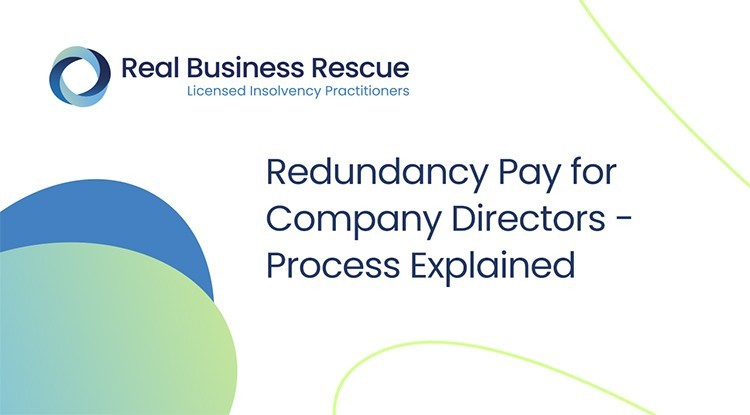Investigating the Interplay In Between Firm Redundancy and Business Versatility for Future Growth
In the dynamic landscape these days's business world, the intricate relationship in between firm redundancy and organizational versatility becomes a vital element for sustained growth and success. Companies frequently face the obstacle of striking a delicate equilibrium between preserving a level of redundancy to mitigate risks and cultivating flexibility to react quickly to the ever-evolving market needs. This delicate interplay holds the crucial to not just enduring in stormy times however also flourishing in the face of unpredictability. As we check out the diverse dimensions of this interplay, interesting insights right into just how companies browse these complexities to lead the way for future development await.
Relevance of Business Redundancy
Company redundancy is a vital component that boosts organizational resilience and mitigates functional dangers. By integrating redundancy measures within the business framework, firms can better endure unexpected disturbances and changes in the service setting. Redundancy offers as a tactical barrier, allowing business to adapt and react effectively to unexpected difficulties without compromising necessary procedures.
One secret element of the importance of business redundancy is its function in making certain continuity during times of crisis. When encountered with abrupt changes or emergencies, repetitive systems, resources, or employees can action in to preserve important features and avoid widespread disturbances. This continuity not only safeguards the company's credibility and customer trust fund but also minimizes financial losses and operational downtime.

Approaches for Organizational Adaptability

Creating adaptable business frameworks that permit for quick adjustments to market characteristics and consumer requirements is necessary for staying competitive in a swiftly evolving atmosphere. By proactively determining potential disturbances and possibilities, companies can proactively adapt and thrive in an ever-changing company landscape.
Balancing Redundancy and Flexibility
Attaining a harmonious equilibrium in between operational redundancy and business adaptability is extremely important in browsing the complexities of a dynamic company setting. Redundancy within a company gives a safeguard, ensuring continuity and security in procedures. However, an unwanted of redundancy can cause inefficiencies and prevent versatility to transforming market problems. On the various other hand, business flexibility enables firms to react promptly to outside disruptions and confiscate brand-new opportunities. Striking the appropriate balance in between redundancy and versatility is a fragile process that calls for a deep understanding of the company's objectives, sector dynamics, and threat tolerance.
To accomplish this equilibrium, business need to carry out normal analyses of their procedures to recognize areas where redundancy is essential for threat reduction and where flexibility can drive innovation and growth. Implementing flexible frameworks, promoting a culture of constant understanding and renovation, and urging open interaction throughout all levels of the company are vital approaches to integrate redundancy and flexibility have a peek at these guys successfully. By lining up these two crucial elements, companies can place themselves for sustainable growth and success in an ever-changing company landscape.
Situation Studies on Adaptation Success
In examining circumstances of effective business adaptation, it becomes noticeable that the interaction between operational redundancy and flexibility is a specifying variable in shaping resilient services. One compelling case research is that of Netflix. At first a DVD rental service, Netflix showed amazing adaptability by transitioning right into a streaming platform when digitalization interfered with the market. By purposefully spending in innovation and material creation, Netflix not just flourished yet made it through in a rapidly developing market. An additional standout example is Amazon. Beginning as this an online book shop, Amazon continuously adjusted its business version, expanding into varied industries such as cloud computing and expert system. This adaptability allowed Amazon to remain in advance of rivals and fulfill altering customer demands. Finally, Adobe gives a significant illustration of effective adaptation. The company shifted from marketing software program licenses to a subscription-based version, making sure recurring revenue streams and improved consumer engagement. These study underscore the importance of functional redundancy paired with organizational adaptability in cultivating long-lasting growth and competition.
Building Durability for Future Growth
Building resilience for future growth requires a strategic alignment of functional procedures with market characteristics and arising patterns. Business need to adapt to altering environments by fostering a culture of flexibility, advancement, and constant enhancement. Resilience involves not just jumping back from setbacks but additionally proactively preparing for future challenges. One key facet of structure resilience is buying durable danger management strategies to reduce potential disturbances. This consists of scenario preparation, branching out supply chains, and developing backup strategies for various backups (who pays redundancy money).
In addition, fostering solid relationships with stakeholders, such as consumers, employees, distributors, and the neighborhood, is important for weathering unpredictabilities and maintaining trust fund and support throughout turbulent times. Efficient interaction and transparency play an essential role in structure strength, as they help facilitate and line up assumptions collaboration in navigating unpredictabilities.
In addition, organizations need to focus on understanding and growth initiatives to upskill workers and furnish them with the essential tools to adjust to changing scenarios. By purchasing their labor force, companies can enhance their versatility and dexterity, inevitably strengthening their durability for lasting future growth.
Conclusion

In the dynamic landscape of today's organization globe, the elaborate partnership between click to investigate business redundancy and business adaptability arises as an essential variable for continual development and success. Business often deal with the obstacle of striking a fragile balance in between keeping a level of redundancy to alleviate threats and fostering flexibility to react quickly to the ever-evolving market needs.To achieve this balance, business require to perform regular evaluations of their procedures to identify areas where redundancy is necessary for danger reduction and where flexibility can drive innovation and development.In verdict, the interplay between business redundancy and business adaptability is crucial for future growth. Building durability with a mix of redundancy and flexibility will certainly make certain that companies are prepared for the challenges of the future.